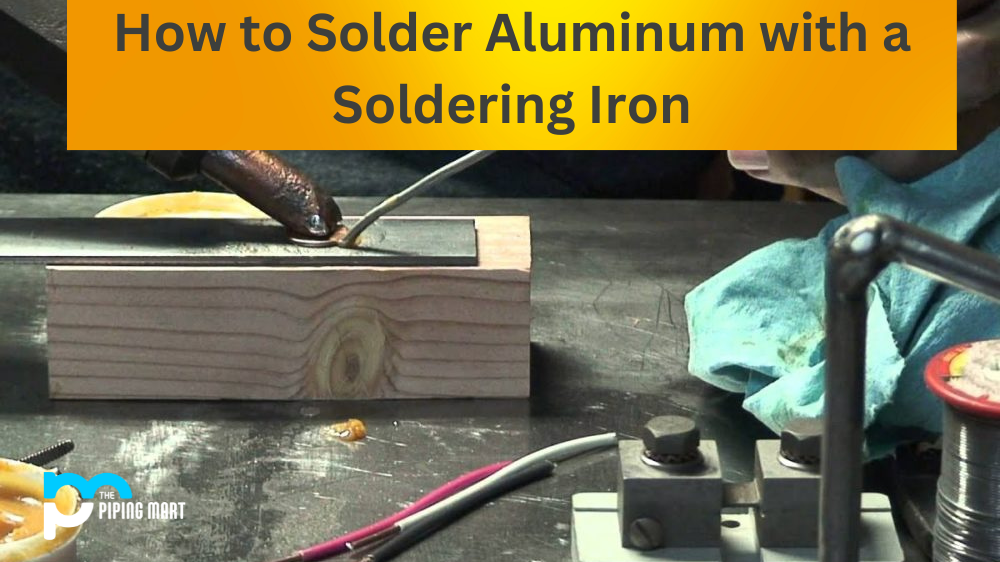Soldering aluminum is not as easy or straightforward as soldering copper or other metals. This is because aluminum has a high affinity for oxygen which makes it difficult to form a good solder joint. However, with the right tools and techniques, it is possible to solder aluminum using a soldering iron. Here’s what you need to know.
Types of Solders for Aluminum
When selecting solder to use on aluminum, you should always choose an acid-core fluxed solder that contains no zinc. The acid in the core will help clean the surface of the metal before soldering begins. It’s also important to avoid zinc-containing solder because when heated, zinc reacts with aluminum to form an alloy that will not take solder. For best results, consider using low-temperature silver-bearing solder for your project.
Preparation before Soldering
It is crucial that you prepare the surfaces before attempting any soldering job on aluminum. Clean both surfaces with steel wool or sandpaper until they are free from dirt and debris. You should also make sure there are no burrs, as these can cause weak spots in your joint after soldering is finished. Once the surfaces are prepped and cleaned, apply paste flux liberally on one side only – this helps prevent oxidation while heating up the process and aids the flow of the solder when applied.
Heating Up Process
When the heating up process begins, keep your iron at about 500°F (260°C). Too much heat can damage the flux coating on your joints, so be careful not to overheat them when applying your iron. As soon as the heating-up process begins, apply a little extra flux – this helps ensure that all exposed surfaces remain clean while you’re working on them. Once everything is heated up sufficiently, add some more paste flux, then touch your iron tip directly onto the joint area while applying pressure to help spread out the molten solder evenly across both pieces of metal being joined together. Once enough molten solder has been added, remove your iron tip from the joint area and allow it time to cool down before handling it or manipulating it further in any way. Finally, inspect your work carefully for any signs of oxidization or other imperfections before continuing on with whatever else needs to be done next!
Conclusion:
Soldering aluminum with a soldering iron requires special attention and preparation compared to other metals like copper or brass due to its affinity for oxygen which makes forming strong bonds more challenging than usual. By selecting an appropriate type of acid-core fluxed solder without zinc content and following proper preparation steps prior to the heating up process (which includes cleaning both surfaces thoroughly and applying paste flux liberally), you can successfully join two pieces of aluminum together using just a soldering iron! Hobbyists, DIYers, and metalworkers alike can benefit greatly from learning how to properly use this technique for their projects!

A passionate metal industry expert and blogger. With over 5 years of experience in the field, Palak brings a wealth of knowledge and insight to her writing. Whether discussing the latest trends in the metal industry or sharing tips, she is dedicated to helping others succeed in the metal industry.




